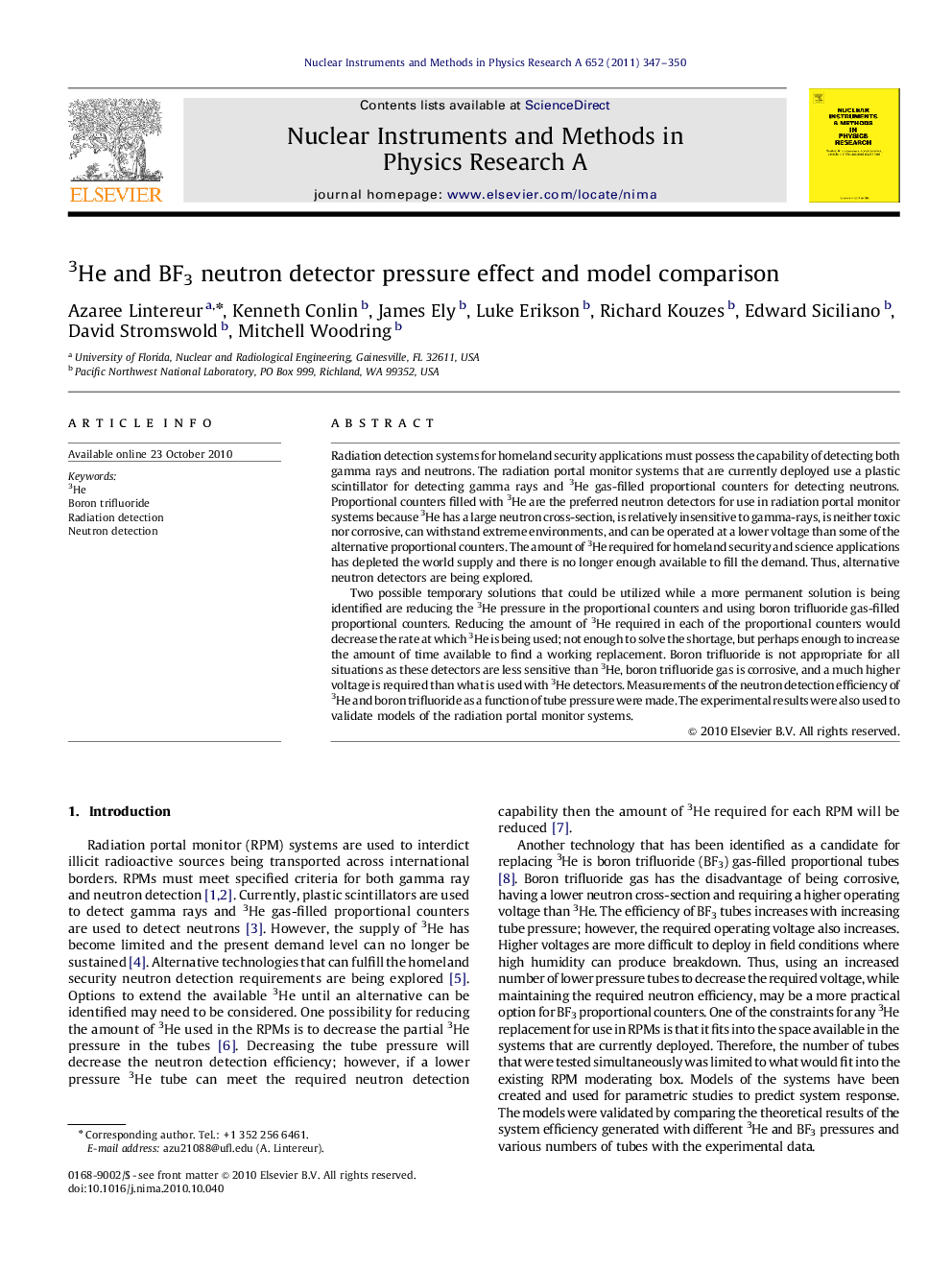| Article ID | Journal | Published Year | Pages | File Type |
|---|---|---|---|---|
| 1824684 | Nuclear Instruments and Methods in Physics Research Section A: Accelerators, Spectrometers, Detectors and Associated Equipment | 2011 | 4 Pages |
Radiation detection systems for homeland security applications must possess the capability of detecting both gamma rays and neutrons. The radiation portal monitor systems that are currently deployed use a plastic scintillator for detecting gamma rays and 3He gas-filled proportional counters for detecting neutrons. Proportional counters filled with 3He are the preferred neutron detectors for use in radiation portal monitor systems because 3He has a large neutron cross-section, is relatively insensitive to gamma-rays, is neither toxic nor corrosive, can withstand extreme environments, and can be operated at a lower voltage than some of the alternative proportional counters. The amount of 3He required for homeland security and science applications has depleted the world supply and there is no longer enough available to fill the demand. Thus, alternative neutron detectors are being explored.Two possible temporary solutions that could be utilized while a more permanent solution is being identified are reducing the 3He pressure in the proportional counters and using boron trifluoride gas-filled proportional counters. Reducing the amount of 3He required in each of the proportional counters would decrease the rate at which 3He is being used; not enough to solve the shortage, but perhaps enough to increase the amount of time available to find a working replacement. Boron trifluoride is not appropriate for all situations as these detectors are less sensitive than 3He, boron trifluoride gas is corrosive, and a much higher voltage is required than what is used with 3He detectors. Measurements of the neutron detection efficiency of 3He and boron trifluoride as a function of tube pressure were made. The experimental results were also used to validate models of the radiation portal monitor systems.
